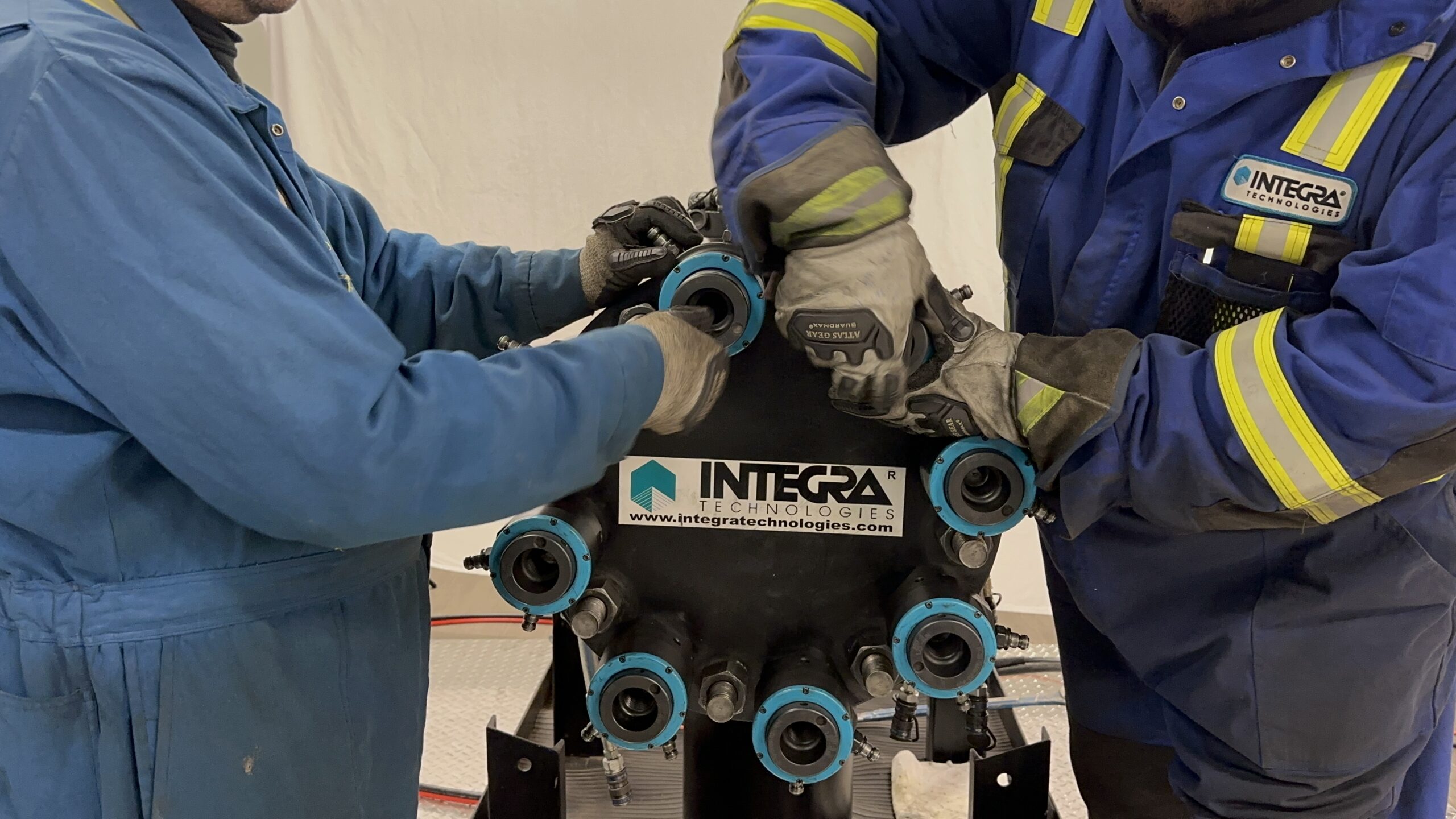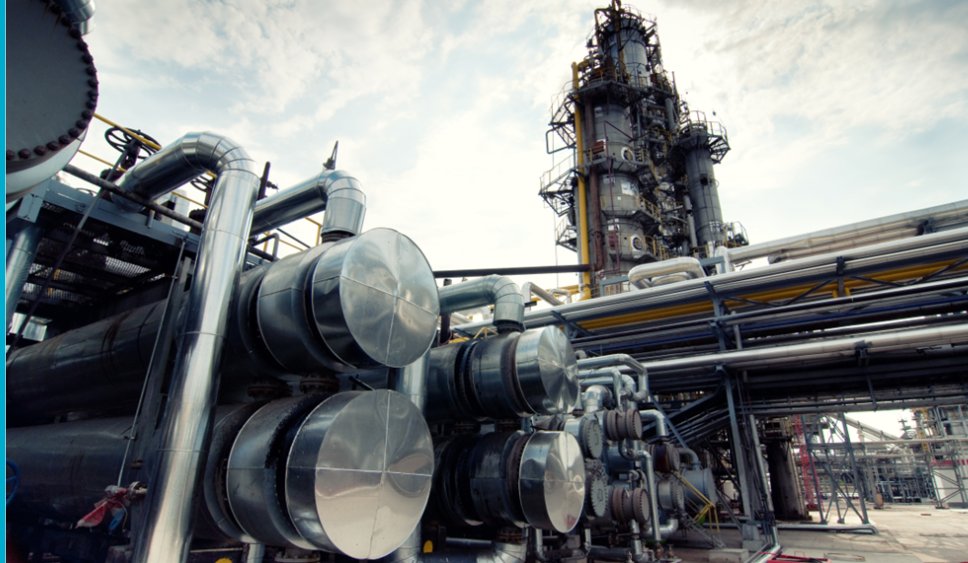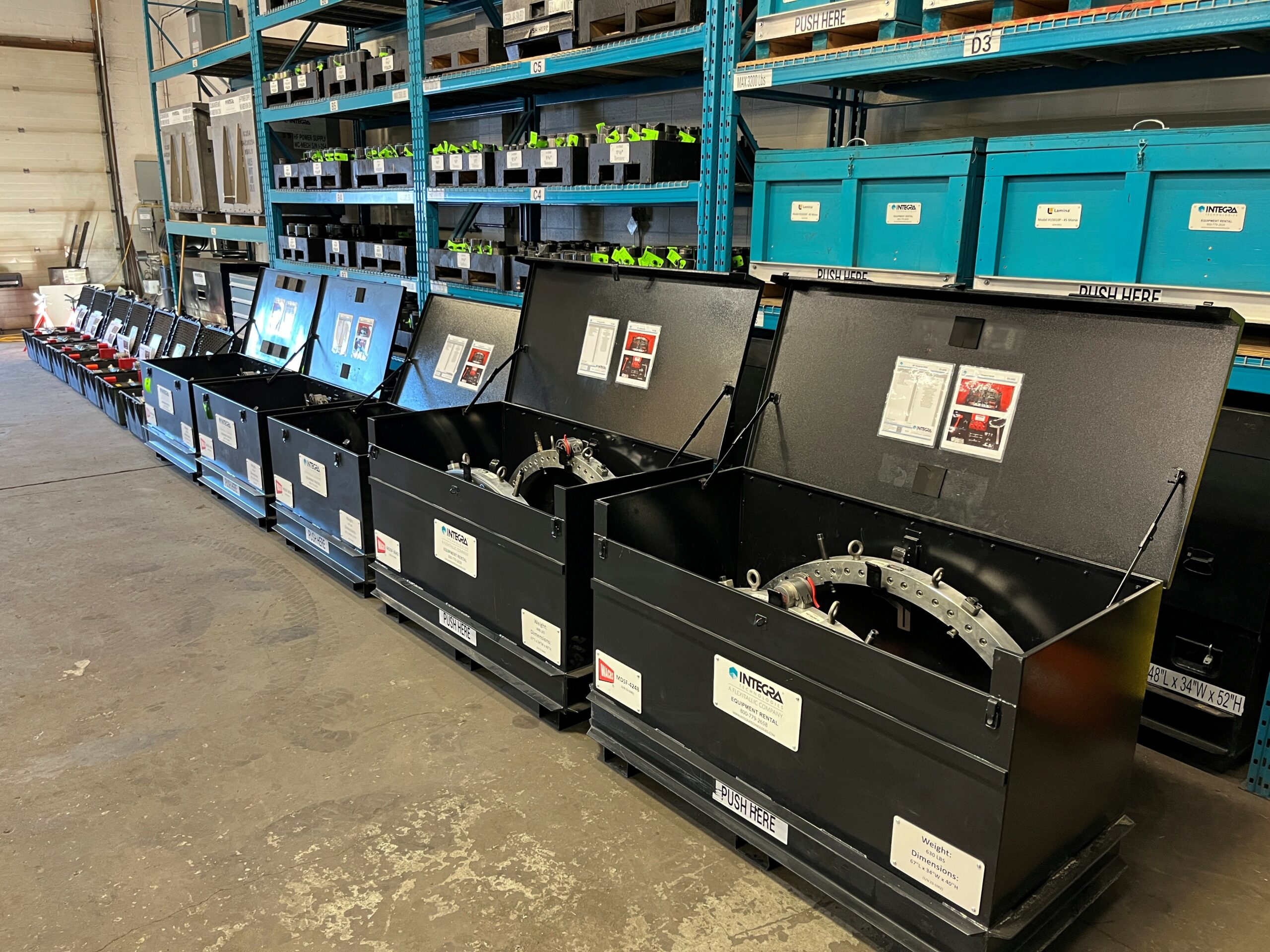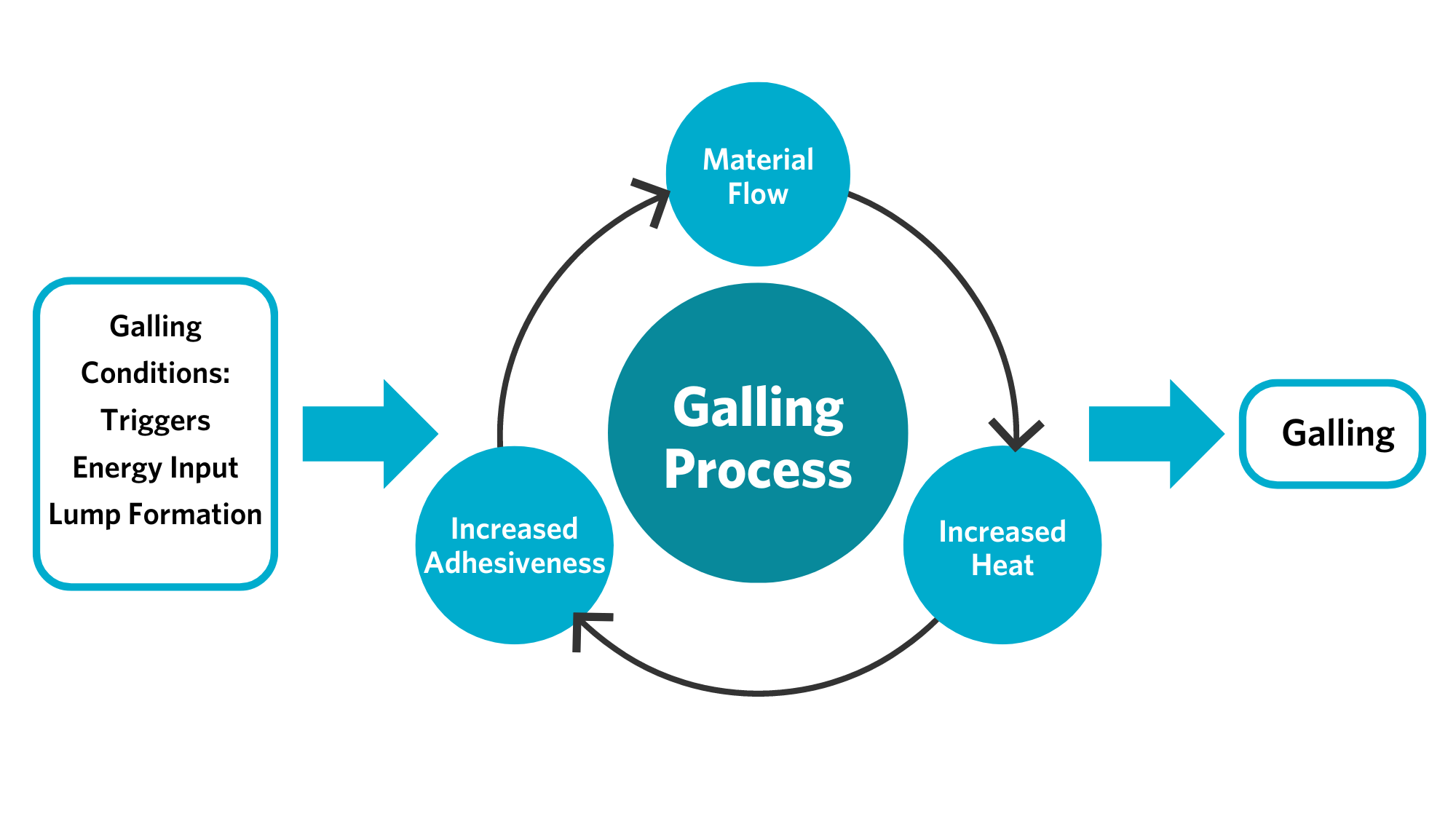What is bolt tensioning?
Bolt tensioning is the process of applying load to some or all bolts on a flange simultaneously using hydraulic nuts or detachable bolt tensioners. Bolt tensioning uses hydraulic pressure to apply axial load directly to the stud rather than turn the nut to apply the load. Tensioning can be performed on a portion or all the studs simultaneously.
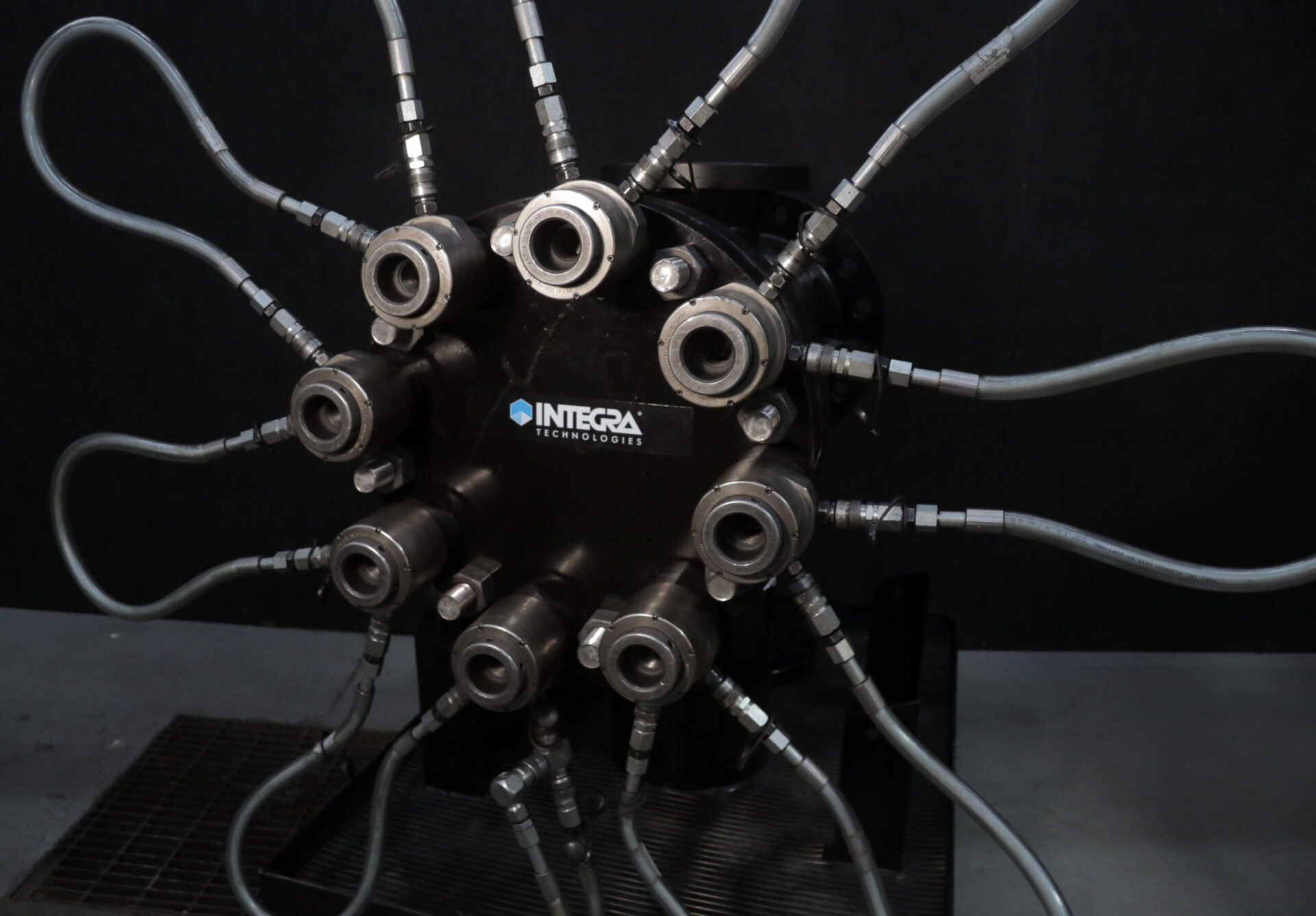
How does bolt tensioning work?
Bolt tensioning works by using hydraulic pressure to axially stretch the stud, turning down the nut by hand until it touches the flange again, and then releasing the hydraulic pressure on the tensioner so the nut holds the applied stretch. This contrasts with bolt torquing, in which load is applied by turning the nut through friction on the helical threads of the stud, which causes the stud to stretch. The tensioning process applies direct axial load to the stud without having to turn the nut to apply it, eliminating the need to guess the amount of friction required or applied.
Key terms to know
Assembly Load or Preload
Assembly Load refers to the load that is placed on a bolt at assembly, but before operation. This term is important to know because the load that is placed on a bolt will change once the flange is in operation. It is important for the Assembly Load to be correctly calculated, applied and verified to ensure adequate load is on the flange to accommodate operational movement of in system.
Operating Load or Working Load
Operating Load refers to the load on the studs during operation of the system. Operation of a system brings fluctuations in temperature, pressure and line loads that can serve to change the bolt load from the original Assembly Load. This change in load from Assembly to Operation happens regardless of how the load is applied. It is critical to have a properly calculated and applied load at assembly to overcome known operational changes that will happen in the system. This term is also applicable whether load is applied via bolt torquing or bolt tensioning.
Tensioning Terminology
When tensioning, there are two additional types of loads to consider.
Applied Load
Applied load is the load applied directly to the axis of the stud while hydraulic pressure is in the tensioner. Applied load is applied to the bolt during tensioning – before the load is transferred from the hydraulics to the bolt and before operation. This load is known to be 99% accuracy as it is calculated from Force = Pressure x Area.
Load Loss
Load loss refers to the load that is lost during the transfer of load from the hydraulics to the nut. When the load in the stud is transferred from the hydraulically pressurized tensioner to the nut, there is resulting load loss. This load loss comes from multiple contact points relaxing and elastically deforming, as the nut now carries the load instead of the tensioner.
This load loss only happens during assembly and is known for most applications. As such, it is compensated for when determining and achieving applied load. Specifically, applied load is calculated according to the estimated load loss for the size of the stud/flange and bolt load.
Residual load
Residual load is the load in the studs after the pressure in the tensioner is released and the nut is carrying the load. When tensioning, the residual load on the bolt is also the bolt’s assembly load or preload.
Residual load can be calculated as: Residual Load = Applied Load – Load Loss.
Tensioning Percentages
When bolt tensioning, load is most often applied to either 50% or 100% of the bolts on a flange simultaneously, depending on the configuration and size of the flange. When utilizing 100% tensioning, the applied load on each bolt is identical, eliminating crosstalk and increasing load accuracy. When tensioning at 50%, in contrast, half of the bolts are tensioned at a time. This requires a higher applied load to the first pass of tensioning than to the second and can produce minor crosstalk. It is important to note, however, that crosstalk is still significantly diminished as compared to bolt torquing.
Contact INTEGRA Technologies to gain insights into the efficient application of bolt tensioning, its benefits over traditional bolt torquing, and the precision it brings to bolted joint assembly.

